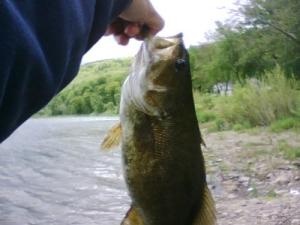Post
Country Style Fishing with a Cane Pole
Tackle Tips & How To's theangler PM

Cane poles – old but effective fishing tools.
Today, finding a good cane pole for sale can sometimes be a problem, but it remains as effective a fishing tool as ever.
If you can locate a cane pole for sale, it should be inexpensive, and if not, “making” your own is a simple, pleasurable task. In truth, nature has already done most of your work for you. All that is necessary to have a pole ready for the old fishing hole is to apply a few finishing touches.
The obvious starting point is to find a patch of cane, and if you will keep an eye out when driving, groves of cane dot the landscape. Almost any landowner will give you permission to cut a few canes, because the plant has growth habits all too reminiscent of kudzu.
In other words, left unchecked cane will eat up territory in a great-big hurry.
The best kind of cane, especially if you want a long pole, will have been manually planted. An import from the Orient, this cane reaches 20 to 25 feet in length when fully mature. Alternatively, you can consider a shorter but perfectly serviceable pole cut from the native cane found along creeks and in river bottoms. Sometimes called “switch cane,” this normally does not reach lengths of more than eight or 10 feet.
With either type of cane, you should cut the pole as close to the ground as possible. This is best done with a saw, and the cut should be made at a joint.
Cane is quite tough, but it has a tendency to split if cut with an ax or hatchet.
Once you have cut a few poles, the next step is to season them. The best way to do this is to attach a weight to the small end of each pole (a brick works nicely) and suspend it from a lofty tree limb for several weeks. This insures a perfectly straight pole, and when it turns from green to yellow it is ready for use.
You can add to the pole’s longevity by applying clear varnish at this point, although this is not an essential step.
Equipped with monofilament (tie it three or four feet from the tip and again at the tip – this is a bit of insurance in case a lunker fish should break the tip off), a split shot, perhaps a bobber, and a hook, you have an easily handled, highly effective piece of fishing equipment.
The typical image of the cane pole is one stuck in a bank while the angler dozes beside it. There’s nothing wrong with this, and the pleasures of a relaxed day of bank fishing are not to be denied. However, the cane pole is surprisingly versatile and lends itself to some uses for which more expensive rods are unsuited.
One of these is the bass fishing technique sometimes called jiggerpoling. This involves a long, sturdy cane pole with only two or three feet of line. One man works a noisy bass plug along the shoreline of a lake or pond with the pole while a companion eases him along in a canoe or john boat.
Properly done, it is a deadly way of catching bass. Once one is hooked, the short line necessitates bringing the fish in by running your hands up the pole.
Another use for cane poles is connected with crappie fishing. They are ideal for what are sometimes called “spider rigs.” This involves fishing from an anchored boat over brush or other likely cover for crappie and using several poles baited with minnows. When extended from the boat in several directions they give it the appearance of a huge water spider.
Cane poles are also ideal for probing around or even underneath docks, piers and overhanging limbs for both crappie and bream. With a cane pole, you can reach spots that are virtually inaccessible with casting equipment, and you don’t have to worry about fragility if you set the hook in a tight spot or bang the pole against something.
One effective technique for fishermen to use when pole fishing, is to wade streams while lobbing a red worm, a spring lizard, grasshopper or some other type of bait into a likely spot with as much accuracy as possible, then tighten the line as the bait drifts with the current. At times, shorten the line and poke the long pole into places that cannot be reached with casting equipment.
Strange as it may seem – and some purists might deem it almost angling heresy – the cane pole can be quite effective when fishing for trout. Whether using bait or a nymph, the fisherman can swing his line, pendulum-like, and drop the lure in likely spots.
Of course, if a well-equipped trout fisherman scoffs at such simplicity, he might want to pause and ponder the fact that some of the finest fly rods – those made of bamboo – are nothing more than glorified cane poles.
If you have a cane fishing pole, you can have as much fun and success as anyone with high-priced fishing gear.
